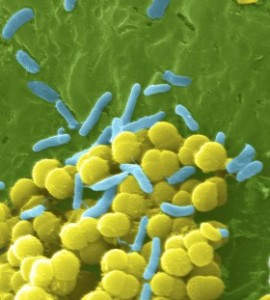
It’s an Evolutionary Arms Race, and the Superbugs are Winning
It’s an Evolutionary Arms Race, and the Superbugs are Winning
An exhaustive new report on the state of drug-resistance in microbes has found that by 2050, infections could kill more people a year than cancer.
It’s time to start doing something about superbugs. A massive new report commissioned by the U.K. government has found that, if left unchecked, by the middle of this century drug-resistant bacteria could kill 10 million people a year—more than currently die of cancer. The costs to the global economy could run to $100 trillion by 2050. It’s one of the greatest threats to global health that we face.
And yet the problem has garnered much less attention than it would seem to warrant. According to economist Jim O’Neill, who led the study at the behest of U.K. prime minister David Cameron, no fundamentally new classes of antibiotic drugs have been developed since the 1950s, and the means of diagnosing bacterial infections remains largely unchanged since the 19th century.
The report’s authors outline a 10-point plan for stopping the coming plague. Many of the measures they outline are straightforward, like improved sanitation, monitoring of how often antibiotics are prescribed, and reducing their use in agriculture (where they are applied prodigiously, both to stop infection and promote growth in livestock).

Such tactics have the potential to make a huge impact. Take poor sanitation as an example: the study estimates that just four countries—India, Nigeria, Indonesia, and Brazil—use 500 million courses of antibiotics each year to combat diarrhea. Cleaning up water supplies could cut that figure by 60 percent. That would be 300 million fewer times bacteria are exposed to our arsenal of germ-killing drugs, and far less opportunity for the bugs to evolve resistance.
Of course, the arsenal could always be expanded, but pharmaceutical companies have to invest heavily in bringing a drug to market. Once they do, they face the challenge of trying to recoup what are often hundreds of millions of dollars in R&D costs and turn a profit—while not making the problem worse by flooding the market with their new compound and giving bugs a chance to develop resistance anew. It should come as little surprise that firms are reluctant to play this game.
Here, too, the report suggests a potentially powerful solution: pay companies big bucks to develop new antibiotics. In their proposal, the authors suggest financial incentives from $800 million to $1.3 billion per drug that would be paid on top of sales revenue for companies to research and produce new weapons in the fight against superbugs.
If that sounds expensive, the report argues, it’s nothing compared to the cost of inaction.
(Read more: The Atlantic, The Economist)

Leave a Reply